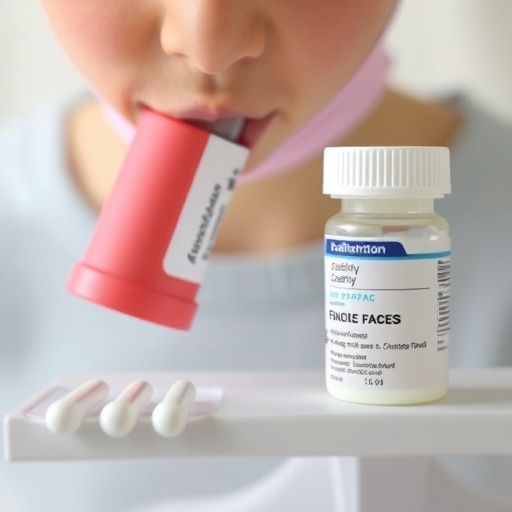CHAPEL HILL, NC – Day in and day out, in our bodies, the DNA in cells is damaged for a variety of reasons, and thus intercellular DNA-repair systems are fundamental to the maintenance of life. Now scientists from the UNC School of Medicine have confirmed and clarified key molecular details of one of these repair systems, known as nucleotide excision repair.
Using an advanced sequencing technique to map and analyze DNA damage, the scientists demonstrated the functions in bacterial cells of two important excision repair proteins: Mfd and UvrD.
"The biochemical mechanisms of these proteins have been known for years from experiments involving purified protein and DNA, and that's very important, but in this new work we've clarified these proteins' roles in living cells," said co-senior author Christopher P. Selby, PhD, research assistant professor of biochemistry and biophysics at UNC.
"Ultimately, this better understanding of bacterial DNA repair could be useful toward the development of antibacterial drugs," said co-senior author Aziz Sancar, MD, PhD, the Sarah Graham Kenan Professor of Biochemistry and Biophysics at UNC.
The research publishes this week in the Proceedings of the National Academy of Sciences.
Sancar was awarded the 2015 Nobel Prize for Chemistry for his research in the 1980s and early 1990s on excision repair in bacteria and in human cells. This repair process, which also occurs in animal cells, fixes one of the most common forms of DNA damage: the bulky adduct, an unwanted chemical modification of DNA typically caused by a toxin or ultraviolet (UV) radiation.
To study excision repair in cells, Sancar, Selby and colleagues recently developed a new technique, XR-seq, which allows investigators to isolate and sequence the small lengths of adduct-damaged DNA that are snipped from the genome during the excision repair process. Knowing the sequences of these DNA snippets allows their locations in the genome to be mapped precisely. They used this method first in 2015 to generate a UV repair map of the human genome, and in 2016 they used the XR-seq method to generate the damage and repair maps of the anticancer cisplatin drug for the entire human genome. Now they have applied this method to answer some fundamental questions about damage repair in E. coli with the potential of developing novel antibiotic drugs.
The un-sticker: Mfd
In this study, which was also led by postdoctoral research associate Ogun Adebali, PhD, the researchers focused largely on Mfd, a protein known from prior work by Sancar and Selby to have a special – and mechanistically unusual – role in excision repair in bacteria.
"I think Mfd is the most interesting protein in E. coli," Selby said. Here's why: When the DNA of a bacterial gene is being transcribed into RNA, and the molecular machinery of transcription gets stuck at a bulky adduct, Mfd appears on the scene, recruits other repair proteins that snip away the damaged section of DNA, and "un-sticks" the transcription machinery so that it can resume its work. This Mfd-guided process is called transcription-coupled repair, and it accounts for a much higher rate of excision repair on strands of DNA that are being actively transcribed.
Using XR-seq to map UV-induced damage in E. coli bacteria cells, the researchers found clear evidence of transcription-coupled repair in normal cells, but not in cells that lack Mfd, thus confirming the protein's role in the process.
The unwinder: UvrD
In further experiments, the researchers defined the role of an accessory excision repair protein in E. coli – UvrD, which helps clear away each excised segment of damaged DNA.
In the absence of UvrD, the excised piece of DNA remains bound to the chromosomal DNA, making it hard for cellular waste-disposal enzymes to chop it up. At the same time, the repair proteins that excised the strand tend to remain stuck to it, and are thus kept from moving on to excise other bits of damaged DNA. UvrD's job is to unwind these damaged and discarded strands from chromosomal DNA, so that they can be disposed of quickly and the associated repair proteins can go on to catalyze additional rounds of repair.
Using XR-seq on UV-damaged E. coli cells, the UNC team confirmed that without UvrD, excised DNA fragments remain stuck to chromosomal DNA, survive much longer in cells, and – by holding onto excision repair proteins – slow down the overall rate of excision repair in cells.
In addition to clarifying the roles of Mfd and UvrD, the research generally heralds the use of the new XR-seq technique in mapping and studying excision repair processes.
"XR-seq provides a new type of sequence data, and in this work we've provided for the first time a genome-wide map of excision repair in a bacterium," said Adebali. "We think this map will be broadly useful to the scientific community."
The researchers now plan further studies using XR-seq in bacterial cells, as well as in human and other mammalian cells where the process of excision repair is less understood.
###
Co-authors of the study were postdoctoral researchers Yi-Ying Chiou, PhD, and Jinchuan Hu, PhD, both in the Sancar lab.
The National Institutes of Health funded this research.
Media Contact
mark derewicz
[email protected]
984-974-1915
@UNC_Health_Care
############
Story Source: Materials provided by Scienmag




